COVID-19: A One Year Timeline
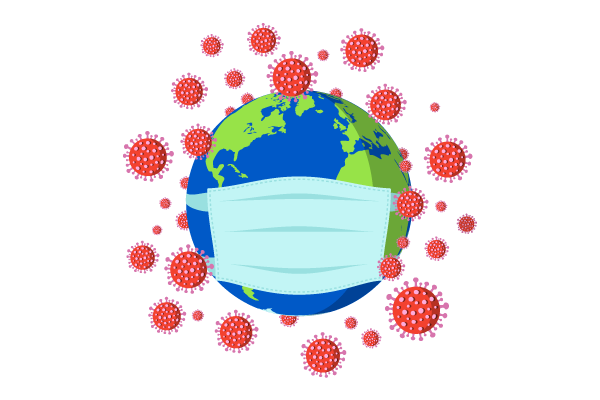
It seems strange to think that a year has already passed in which the world, as we once knew it, underwent its profound transformation in response to the COVID-19 pandemic. Overnight, our schools were forced to shut down, our restaurants forced to close, and our social interactions forced to halt. From elementary students to college students, we all began schooling online. Masks, temperature checks, and social distancing quickly became the new normal as we continued to fight the battle against this vicious virus. Below is a timeline of the pandemic over the past year — drawing on the profound transformations that have shifted the way of life for so many of our global citizens.
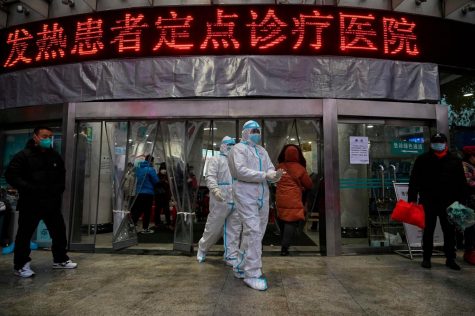 December 2019 — WHO picks up a media statement by the Wuhan Municipal Health Commission from their website on cases of “viral pneumonia” in Wuhan, China.
December 2019 — WHO picks up a media statement by the Wuhan Municipal Health Commission from their website on cases of “viral pneumonia” in Wuhan, China.
20 January 2020 — Three additional cases of this coronavirus-related pneumonia are reported in Thailand and Japan, causing the CDC to begin screenings at JFK International, San Francisco International, and Los Angeles International airports. These airports are chosen because of the high density of travelers commuting between Wuhan, China and the United States.
21 January 2020 — Dr. Zhong Nanshan, MD, confirms that the coronavirus can be transmitted from person to person. At this point, it has killed 4 people and infected more than 200 people in China.
23 January 2020 — Wuhan mandates a lockdown quarantine for its eighteen million citizens to slow the spread and transmission of the virus.
31 January 2020 — WHO issues a Global Health Emergency for only the sixth time since its founding. The global death toll has now reached 200 and the case number has reached 9,800 with cases found in the United States, Thailand, Germany, Japan, Vietnam, and China.
2 February 2020 — Global air travel from China is restricted in the United States. Australia, Germany, Italy, and New Zealand quickly follow suit.
3 February 2020 — The United States, under the Trump Administration, declares a public health emergency in response to the coronavirus pandemic and the quickly growing number of global cases.
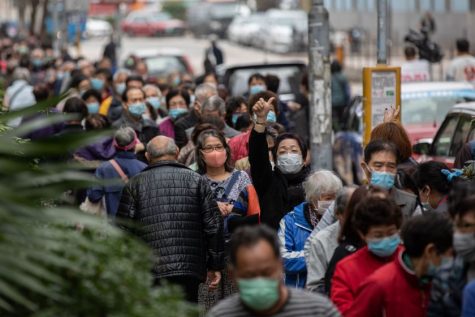 11 February 2020 — WHO announced that the disease caused by the coronavirus is to be named COVID-19. This was chosen to avoid inaccuracy and stigma and therefore did not refer to a geographical location, an animal, an individual or group of people.
11 February 2020 — WHO announced that the disease caused by the coronavirus is to be named COVID-19. This was chosen to avoid inaccuracy and stigma and therefore did not refer to a geographical location, an animal, an individual or group of people.
11 March 2020 — WHO declares COVID-19 a pandemic. Tedros Adhanom Ghebreyesus, director-general of WHO, expressed concern about “the alarming levels of inaction” regarding the spread of the virus.
13 March 2020 — President Donald Trump declares a national emergency, unlocking billions of dollars in federal funding to fight the spread of the virus. In addition, the travel-ban on non-U.S. citizens traveling from Europe goes into effect with an exemption for those traveling from the United Kingdom and the Republic of Ireland.
17 March 2020 — The University of Minnesota begins testing hydroxychloroquine as a preventative for an individual exposed to COVID-19 from becoming ill or reducing the severity of the infection.
19 March 2020 — California becomes the first U.S. state to issue a state-wide stay-at-home order, mandating all residents to stay at home except to go to an essential job or shop for essential needs.
27 March 2020 — United Kingdom Prime Minister Boris Johnson announces that he has tested positive for the COVID-19 virus and is self-isolating.
30 March 2020 — FDA issues an emergency use authorization for hydroxychloroquine to be donated to the Strategic National Stockpile and donated to hospitals to treat patients with COVID-19.
29 April 2020 — NIH trial shows early promise for remdesivir. Trial data show that remdesivir, made by Gilead Sciences, is better than placebo in treating COVID-19.
1 May 2020 — FDA issues an emergency use authorization for remdesivir as a result of preliminary data from an NIH trial that found the treatment accelerated recovery in individuals with advanced COVID-19 and lung involvement.
28 May 2020 — COVID-19 deaths in the United States surpass 100,000.
10 June 2020 — COVID-19 cases in the United States reach 2 million.
18 June 2020 — WHO announces that it plans to halt testing hydroxychloroquine as a treatment for the COVID-19 virus as trials show that the drug does not reduce the mortality rate.
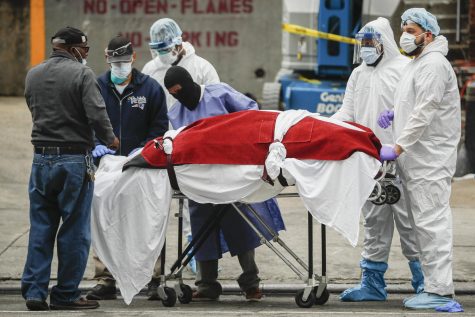 20 June 2020 — NIH halts the trial of hydroxychloroquine, claiming the treatment does not harm and provides no benefit.
20 June 2020 — NIH halts the trial of hydroxychloroquine, claiming the treatment does not harm and provides no benefit.
7 July 2020 — COVID-19 cases in the United States surpass 3 million. The United States announces its withdrawal from WHO citing its weak response to the COVID-19 pandemic. Jair Bolsonaro, President of Brazil, tests positive for the COVID-19 virus.
14 July 2020 — Early data from Moderna Inc’s COVID-19 vaccine show that doses produce immune responses in all three groups of fifteen volunteers.
21 July 2020 — Both the AstraZeneca and CanSino Biologics vaccines show promising results against the COVID-19 virus.
22 July 2020 — HHS and DOD strike a partnership with the biotechnology companies, Pfizer and BioNTech, for a December delivery of 100 million doses of their COVID-19 vaccine candidate.
27 July 2020 — Moderna Inc. begins its first phase three clinical trial to examine a vaccine candidate against COVID-19. It receives $472 million in funding from the Trump Administration.
17 August 2020 — The COVID-19 virus is declared the third leading cause of death in the United States.
26 August 2020 — FDA issues an emergency use authorization for Abbot’s Rapid Test, a portable rapid COVID-19 test that can deliver results in under 15 minutes.
28 August 2020 — The first case of COVID-19 reinfection is reported in the United States.
14 September 2020 — Pfizer and BioNTech announce they will expand the phase three trial of their COVID-19 vaccine in order to increase data on safety and efficacy. They hope to promote a more diverse population, including people as young as 16 years and patients with HIV, hepatitis C, or hepatitis B.
21 September 2020 — Johnson & Johnson begins phase three of its COVID-19 vaccine trial. Unlike Modera and Pfizer-BioNTech’s vaccines, the Johnson & Johnson vaccine does not need to be frozen and may require one injection instead of two.
28 September 2020 — Global COVID-19 virus deaths surpass one million.
2 October 2020 — President Donald Trump and First Lady Melania Trump test positive for the COVID-19 virus. They are taken to the Walter Reed National Military Medical Center after showing mild symptoms.
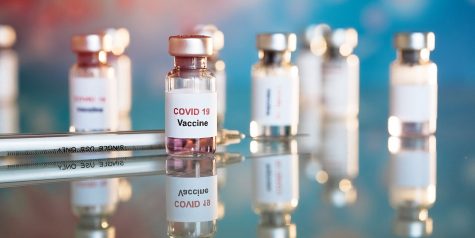 18 November 2020 — The Pfizer-BioNTech Vaccine is announced to be 95% effective.
18 November 2020 — The Pfizer-BioNTech Vaccine is announced to be 95% effective.
20 November 2020 — The AstraZeneca Vaccine is announced to be 95% effective.
11 December 2020 — The FDA agrees to issue an emergency use authorization for the Pfizer-BioNTech vaccine, allowing shipments to begin.
18 December 2020 — The FDA agrees to issue an emergency use authorization for the Moderna vaccine, allowing shipments to begin.
21 December 2020 — A new variant of the COVID-19 virus is identified in the United Kingdom. The variant is more contagious, but is not more lethal and does not lead to more severe disease.
28 December 2020 — Novavax begins phase three of its COVID-19 vaccine trial.
30 December 2020 — The United Kingdom approves emergency use authorization for the AstraZeneca COVID-19 vaccine.
31 December 2020 — The United States falls short of its goal to administer 20 million vaccines by the year’s end. The CDC claims only about 2.8 million people have received an initial vaccination.
3 January 2021 — India approves the AstraZeneca-Oxford’s vaccine and Bharat Biotech vaccine for emergency use.
4 January 2021 — British Prime Minister Boris Johnson announces that the United Kingdom will enter into a seven-week lockdown with schools closing until February and the closing of all non-essential shops.
7 January 2021 — Japanese Prime Minister Yoshihide Suga declares a state of emergency after Tokyo reports a record number of new COVID-19 infections.
24 January 2021 — Mexican President Andrés Manuel López Obrador tests positive for the COVID-19 virus.
8 February 2021 — South Africa halts the use of the AstraZeneca vaccine following a trial that showed it did not have an effect on South African variants of the virus.
27 February 2021 — FDA approves the third COVID-19 vaccine, Johnson & Johnson’s single-shot vaccine, for emergency use.
1 March 2021 — The CDC announces that patients who exhibited an allergic reaction to the Pfizer or Moderna vaccine can get the Johnson & Johnson vaccine for their second round.
2 March 2021 — Texas ends the mask requirement, the largest U.S. state yet to do so, with only six percent of its population fully vaccinated. In addition, the U.S. Conference of Catholic Bishops labels the Johnson & Johnson vaccine morally compromised due to the vaccine’s use of stem cells derived from an aborted fetus in development. Catholics are advised against taking the newly approved Johnson & Johnson vaccine and to, instead, choose the Pfizer-BioNTech or Moderna.
Glossary of Acronyms
CDC = Center for Disease Control
COVID-19 = Coronavirus Disease 2019
DOD = United States Department of Defense
FDA = Food and Drug Administration
HHS = United States Department of Health and Human Services
NIH = National Institute of Health
WHO = World Health Organization
Sources
https://www.ajmc.com/view/flu-vaccine-may-protect-against-covid-19-infection
https://en.wikipedia.org/wiki/Timeline_of_the_COVID-19_pandemic

Siona Manocha, a senior, has attended Keystone School since kindergarten. Through The Keynote, Siona employs the use of visual art and media to highlight...
